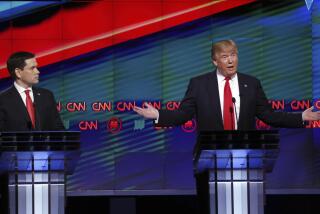The Highway to Raising U.S. Productivity
- Share via
For all its importance, the issue that may turn out to be the economic hallmark of the 1990s--public investment in roads and bridges, sewers and airports--attracted little controversy in Tuesday’s elections.
When all the returns are counted, they’ll probably show that voters in many states approved bond issues for water and sewage plants, toll roads and public transit, housing, airports and all those other things called infrastructure.
That has been the trend in recent years since voters realized that shortchanging infrastructure was false economy. Neglect has left bridges unsafe, water mains rusting and highways buckling. Voters have been saying yes to public works bond issues, since three people died in the 1983 collapse of a highway bridge in Connecticut and especially since the Nimitz Freeway collapse in last year’s Bay Area earthquake.
That trend could accelerate in the ‘90s for several reasons. First, America’s public facilities continue to deteriorate, increasing the cost of fixing or replacing them. By a conservative estimate of the Government Finance Officers Assn.--12,000 state, county and municipal budget directors--public spending must double to almost $150 billion a year to bring facilities up to proper standards and handle new growth.
But the money would be well spent, say many experts, because it would provide America a way out of its economic doldrums. The nation has paid a higher price than it realizes for letting infrastructure decay, says economist Alan Blinder of Princeton University.
It hasn’t been simply inconvenient for trucks to detour around closed bridges or flight delays to become common at crowded airports, Blinder suggests. It has been unproductive.
Real growth in output per hour--productivity--has fallen from 2.3% a year in the 1950s and ‘60s to just about 1% a year in the past two decades. “It’s no coincidence that public investment--aside from military spending--has been falling for throughout those two decades,” says David Aschauer, an economist who developed a new theory on public spending at the Federal Reserve Bank of Chicago.
“Public investment in infrastructure inspires private investment,” Aschauer says. So increased public spending in this decade would revive U.S. productivity growth, he says.
History is on Aschauer’s side. The Interstate Highway System, begun in 1956, gave a big boost to productivity by allowing trucks to move food and merchandise faster, and thus to deliver goods more cheaply. The nation got more for less: In other words, productivity rose.
The pattern was the same as far back as 1825, when the Erie Canal opened a way to get Midwestern farm produce to ports on the Atlantic Ocean. Suddenly, costs were cut dramatically.
Where it once cost more to ship the grain to port than to ship it across the Atlantic, now American farmers and shippers could earn more from the trade and whole regions blossomed with new investment.
That may be inspiring history, you say, but how does it apply to the 1990s? America may repair its highways, but it won’t build a new interstate system. And we don’t need a new Erie Canal.
No, but America will need new kinds of highways. It will need high-speed trains, more sophisticated air traffic control systems and cars that burn clean fuel.
And it will need upgraded, fiber optic cable networks for telecommunications, if it is to be competitive in the world. “Other countries, particularly France and Japan, have made the telecommunications infrastructure the centerpiece of their economic planning,” says William Davidson, a telecommunications expert at the USC School of Business.
Japan’s Nippon Telegraph & Telephone Co.--a partly government-owned company--will spend $210 billion to bring fiber optic cable to every major business office by 1995 and to every home by 2000. That will expand the ability of companies to efficiently process information, to engineer new designs and products, and the ability of Japan’s people to communicate and learn. They will get more for less. In other words, they will enjoy rising productivity.
And American industry is concerned. “Technological leadership in the 21st century will depend on the telecommunications infrastructure,” Chairman George Fisher of Motorola recently told an audience at Caltech. “And yet our response lacks direction, our government has lost its way.”
Fisher wasn’t calling for government funding for telephone lines. Private investment can handle that. But he was calling on government to create a framework or, as he put it, to create a modern equivalent of the National Weather Service set up 120 years ago this month by the federal government to provide weather information for farmers and industry.
He was calling on government to support infrastructure, in other words. And as Tuesday’s election results showed, the voters are inclined to agree.
More to Read
Get the L.A. Times Politics newsletter
Deeply reported insights into legislation, politics and policy from Sacramento, Washington and beyond. In your inbox twice per week.
You may occasionally receive promotional content from the Los Angeles Times.









